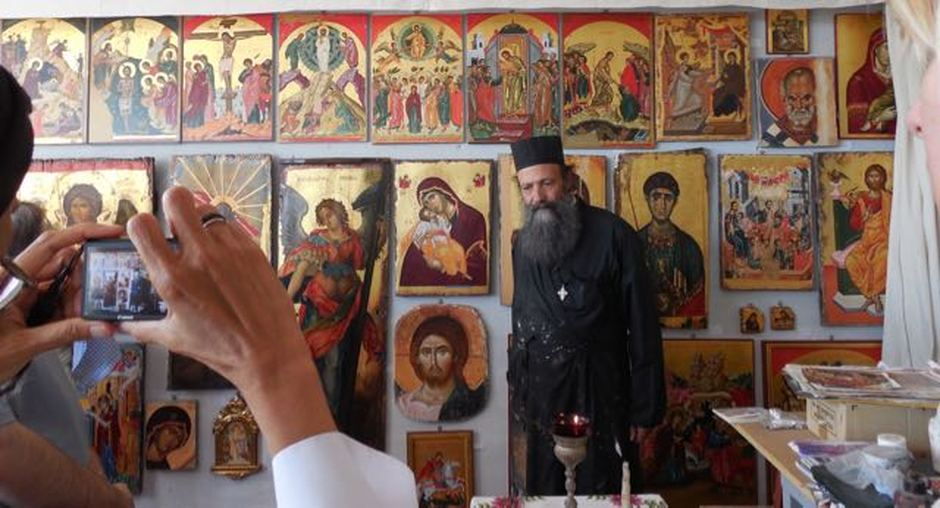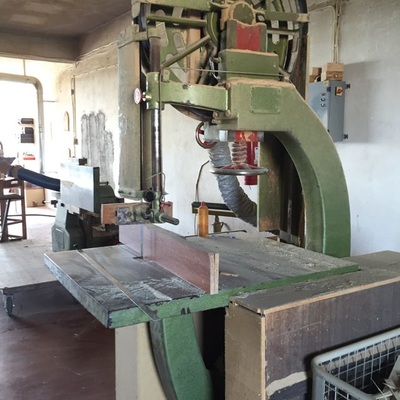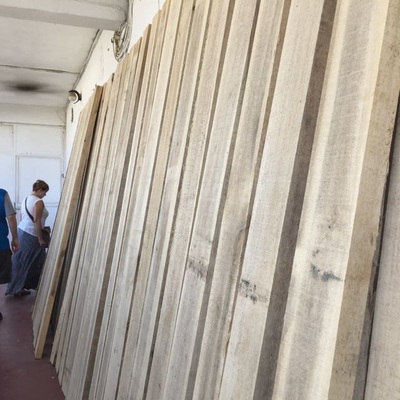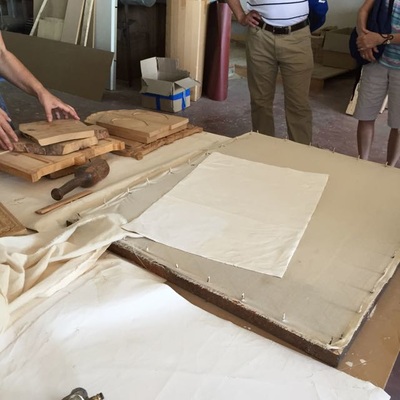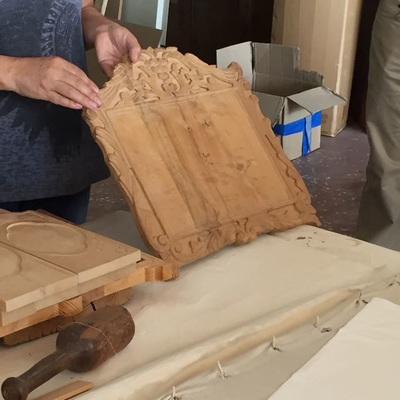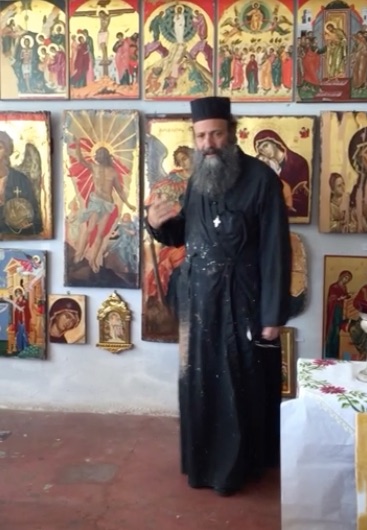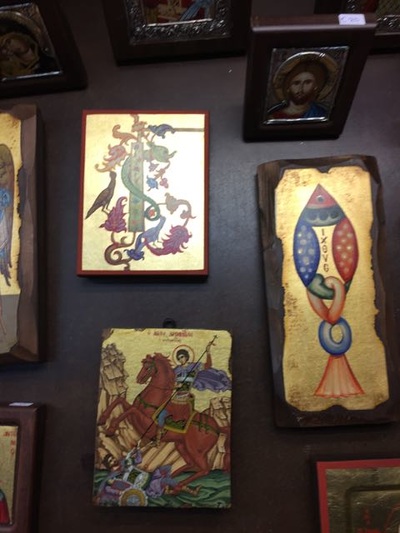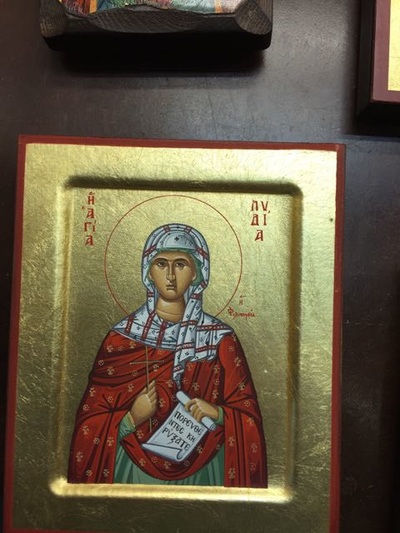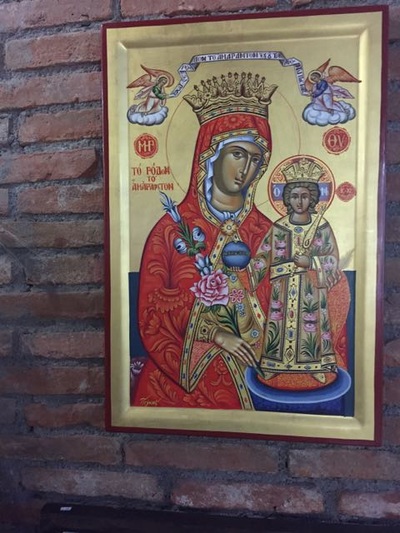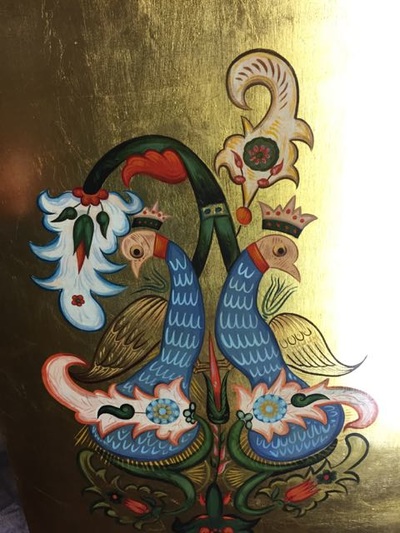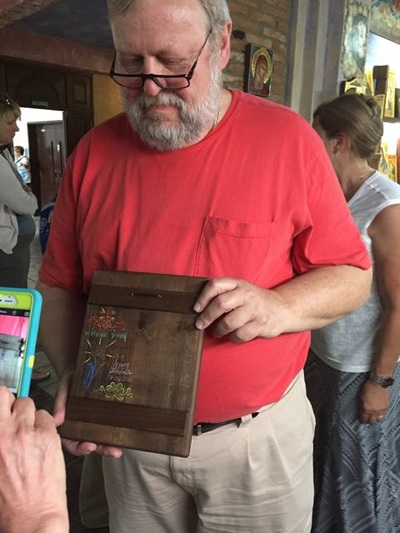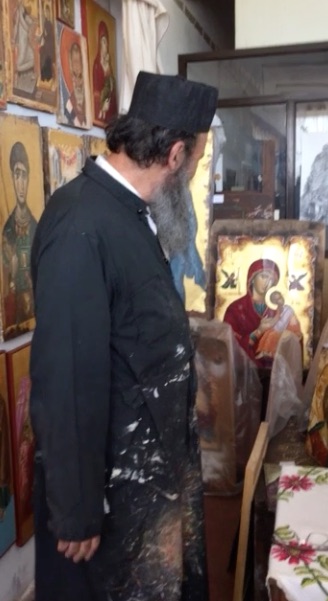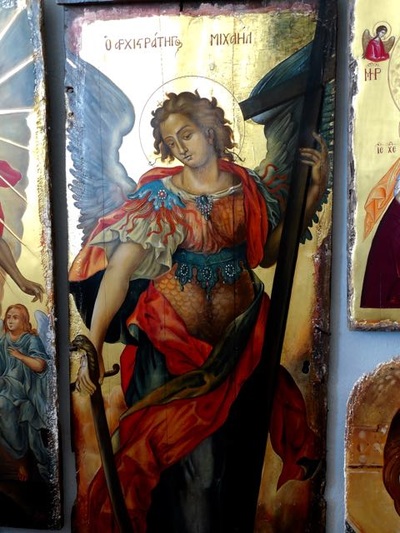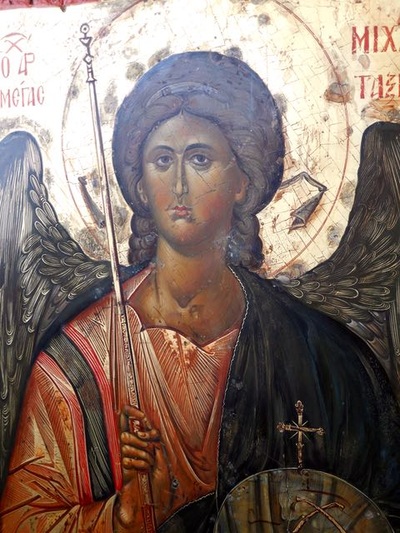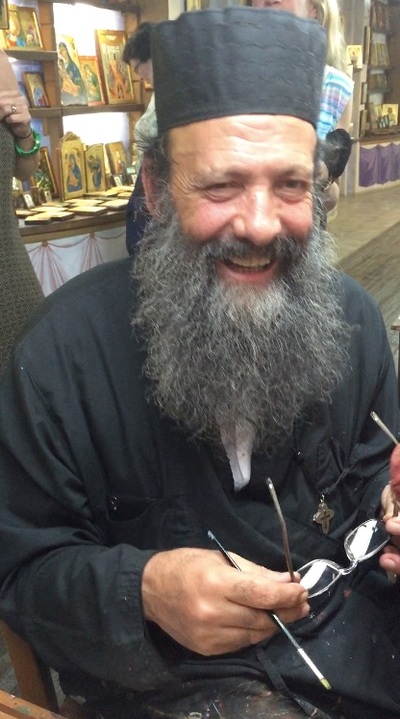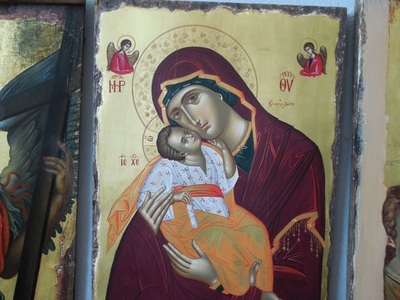Pefkis Icon Studio and Workshop in Trikala
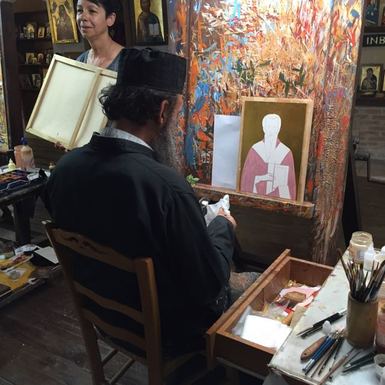 Fr. Pefkis begins to paint the first highlights on the saint's robes as our guide, his sister-in-law, explains how the boards are prepared.
Fr. Pefkis begins to paint the first highlights on the saint's robes as our guide, his sister-in-law, explains how the boards are prepared.
From Kalampaka we move south to Trikala, birthplace of the well-known Greek musician/composer/bouzouki player Vassilis Tsitsanis who is considered the founder of contemporary Rebetiko music.
Hidden atop a strip mall-like structure in Trikala, Greece, near Kalampaka, is the icon studio of Fr. Pefkis and his family (everyone paints or is involved). The workshop is quite large with many rooms where the icons are prepared: cutting and shaping boards, layering gesso, stretching canvas (he works a bit differently than many iconographers), painting, gilding, sealing, etc. occurs. They also tool silver Riza coverings and make intricately carved icon frames.
We were welcomed with loukoumi (a gelatin-based candy covered with powdered sugar) and shown the entire process of a workshop that has commissions from the both the Ecumenical Patriarchate and the Vatican, as well as churches and individuals. What is interesting is that Fr. Pekris has mastered the style of every school of iconography. He told us that he strives to create reproductions of every period. He works in the middle of his "museum" of icons, each shelf a different period or school. Many are his original hand painted icons, many are his proteges and students, and there were several easels with icons in different phases of completion. Visitors can purchase original icons painted in the studio or silk-screened reproductions. Some frescoes
Fr. Pefkis took us to a back room where one wall is filled with prototypes of every school and style of iconography, from classical Byzantine to icon periods influence by the Western Renaissance. He works not directly on wood but on gessoed canvases that are then applied to wooden boards. Some canvases are purposefully "distressed" because the commissioner wants the icon to look aged, like its historical prototype. To achieve this the canvas is wrinkled before it is attached to the wood.
Fr. Pefkis' son is an excellent gilder. His tooled haloes have perfect mirror-like surfaces; He told us he has to work alone in a quiet, clean room with no dust because even a small speck will ruin the gilding. We spent over two hours watching Fr. Pekris paint, picking out icons to purchase, asking questions, all with an easy banter, humility and humor. He added flourished signatures and Byzantine designs to the backs of each of the icons he personally signed. He seemed to enjoy having a roomful of icon students, was incredibly respectful to Phil and John. He gave them each an original icon and several in the group picked out icons to remember this visit.
Hidden atop a strip mall-like structure in Trikala, Greece, near Kalampaka, is the icon studio of Fr. Pefkis and his family (everyone paints or is involved). The workshop is quite large with many rooms where the icons are prepared: cutting and shaping boards, layering gesso, stretching canvas (he works a bit differently than many iconographers), painting, gilding, sealing, etc. occurs. They also tool silver Riza coverings and make intricately carved icon frames.
We were welcomed with loukoumi (a gelatin-based candy covered with powdered sugar) and shown the entire process of a workshop that has commissions from the both the Ecumenical Patriarchate and the Vatican, as well as churches and individuals. What is interesting is that Fr. Pekris has mastered the style of every school of iconography. He told us that he strives to create reproductions of every period. He works in the middle of his "museum" of icons, each shelf a different period or school. Many are his original hand painted icons, many are his proteges and students, and there were several easels with icons in different phases of completion. Visitors can purchase original icons painted in the studio or silk-screened reproductions. Some frescoes
Fr. Pefkis took us to a back room where one wall is filled with prototypes of every school and style of iconography, from classical Byzantine to icon periods influence by the Western Renaissance. He works not directly on wood but on gessoed canvases that are then applied to wooden boards. Some canvases are purposefully "distressed" because the commissioner wants the icon to look aged, like its historical prototype. To achieve this the canvas is wrinkled before it is attached to the wood.
Fr. Pefkis' son is an excellent gilder. His tooled haloes have perfect mirror-like surfaces; He told us he has to work alone in a quiet, clean room with no dust because even a small speck will ruin the gilding. We spent over two hours watching Fr. Pekris paint, picking out icons to purchase, asking questions, all with an easy banter, humility and humor. He added flourished signatures and Byzantine designs to the backs of each of the icons he personally signed. He seemed to enjoy having a roomful of icon students, was incredibly respectful to Phil and John. He gave them each an original icon and several in the group picked out icons to remember this visit.
